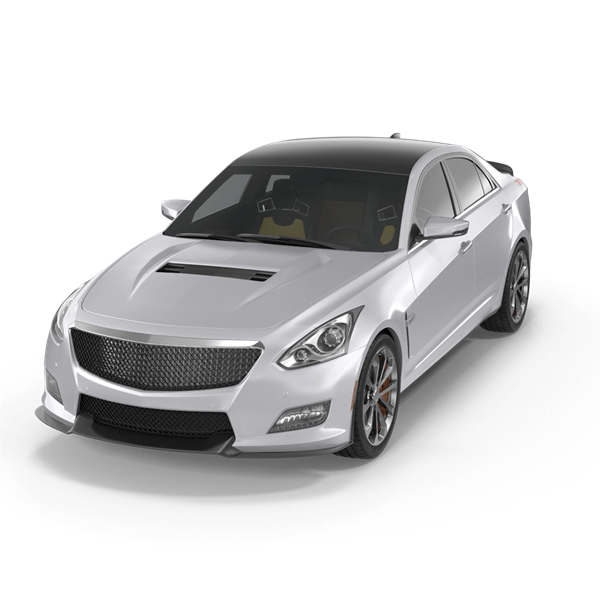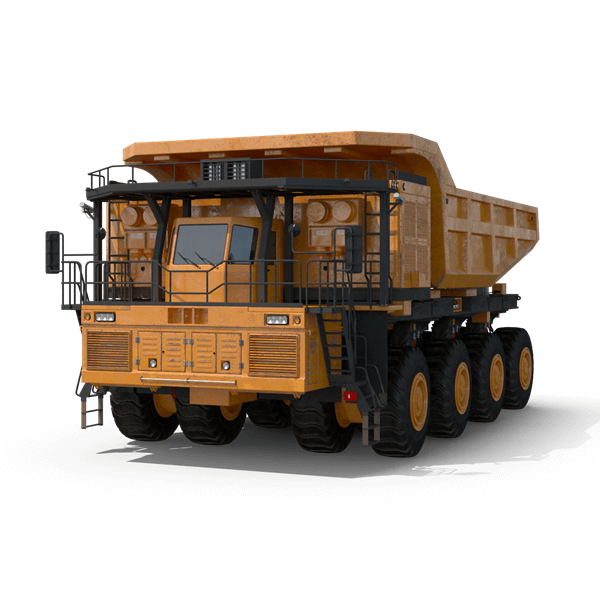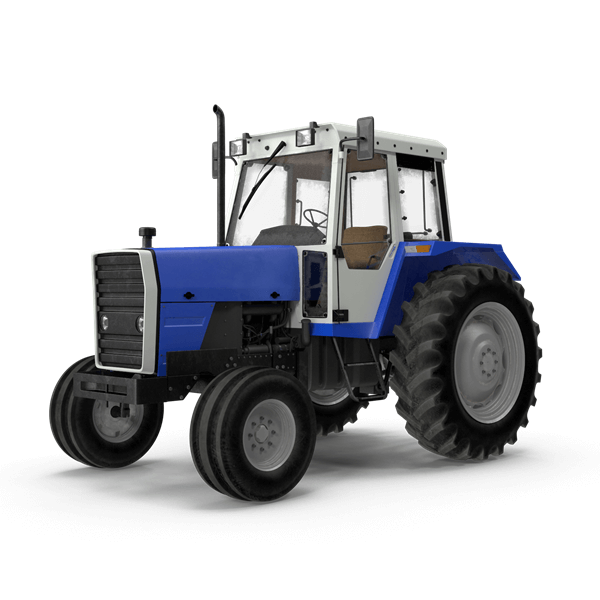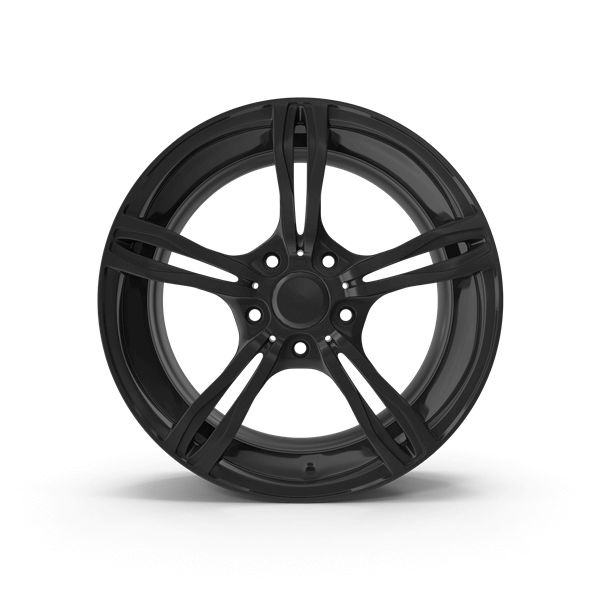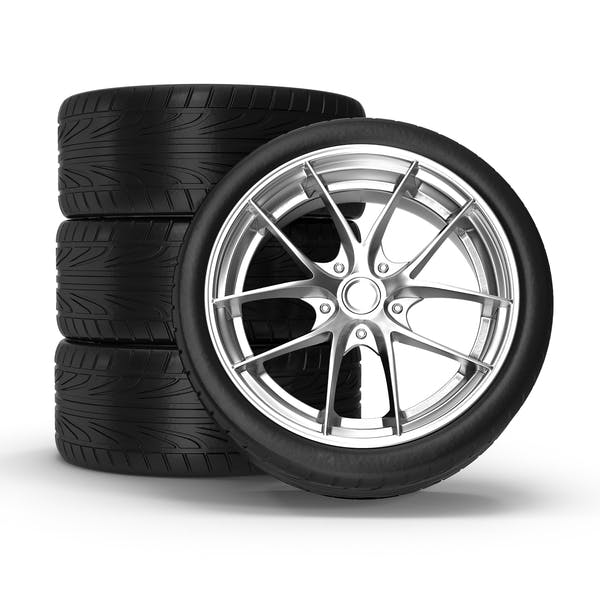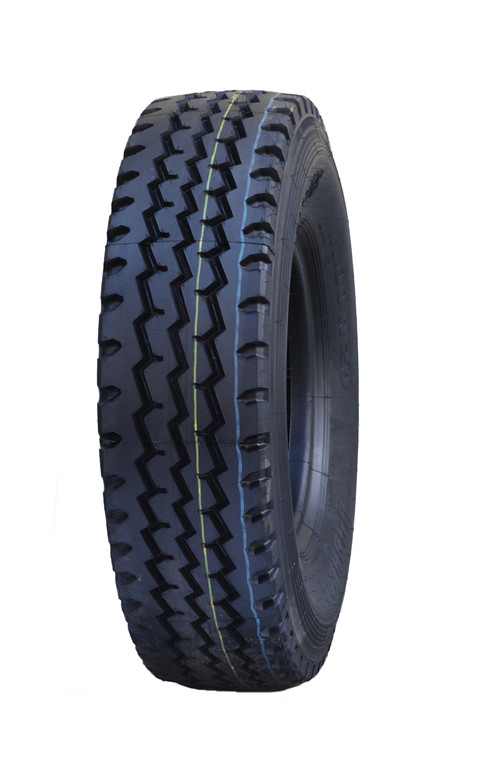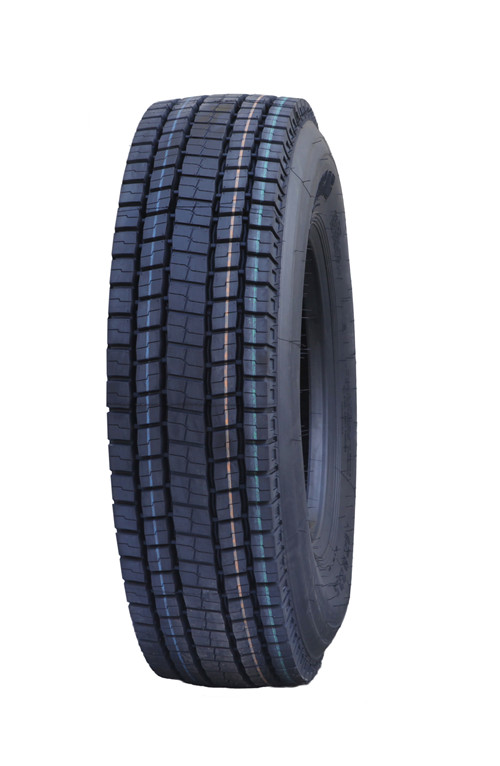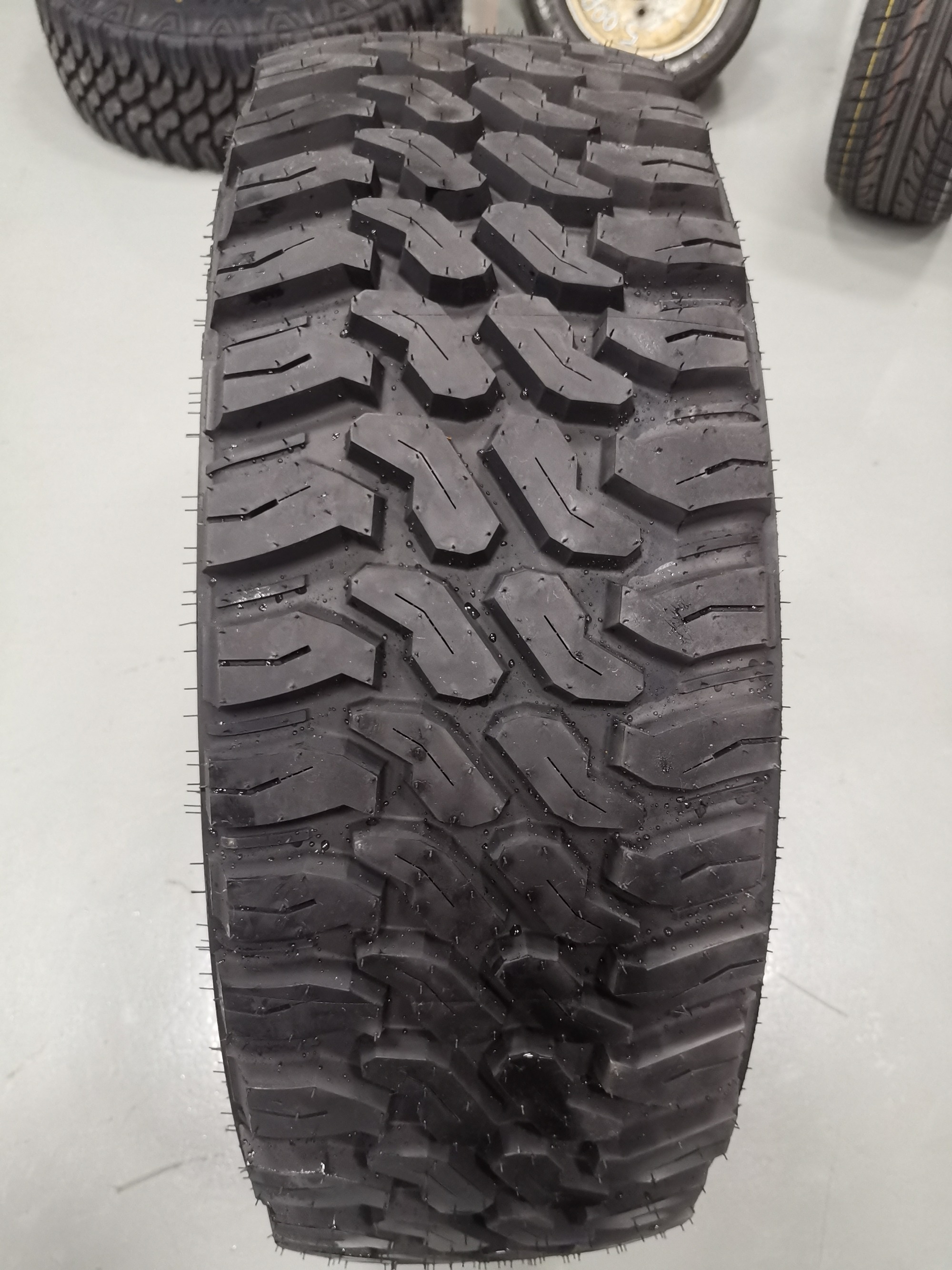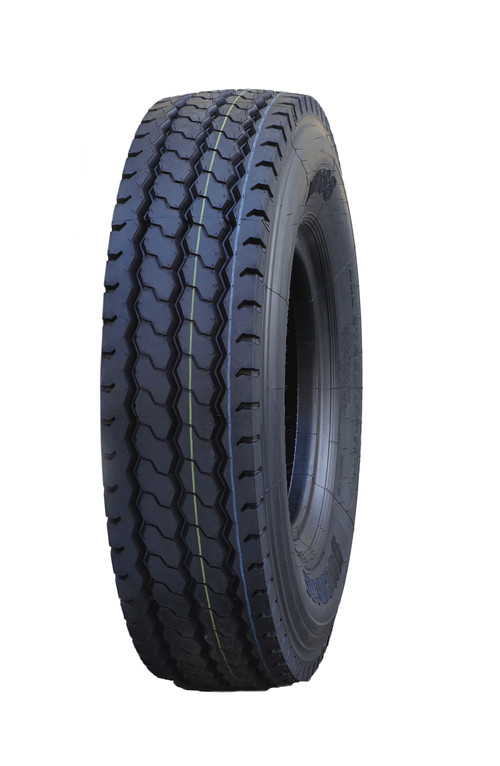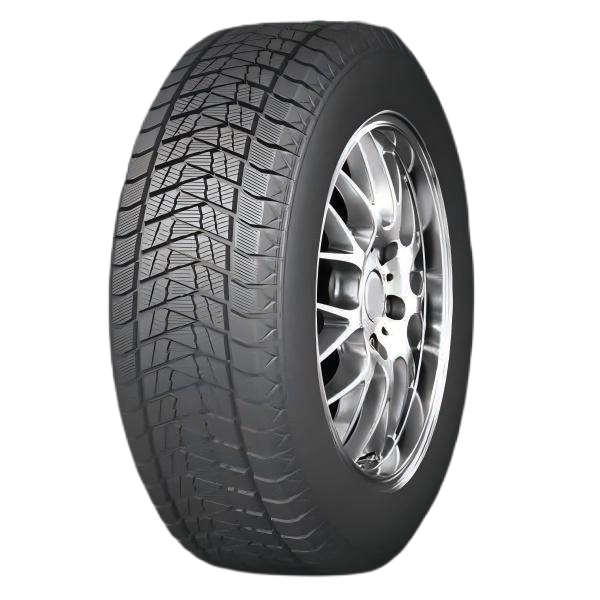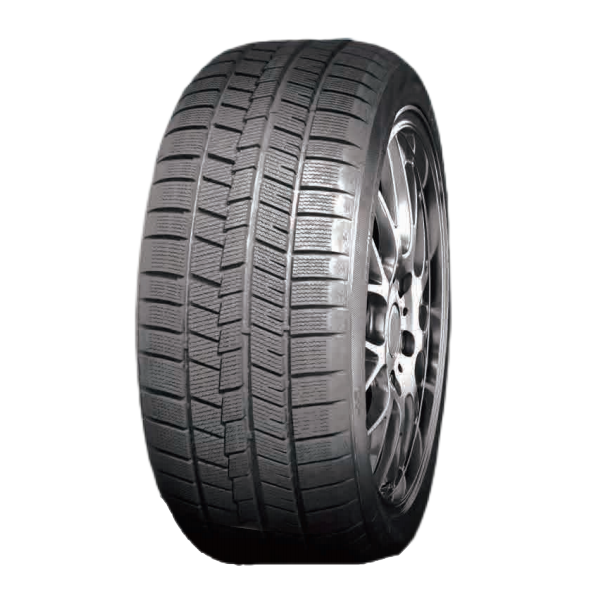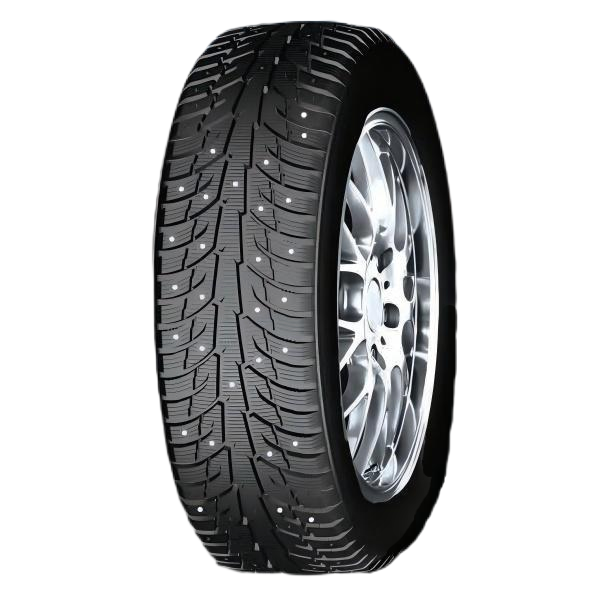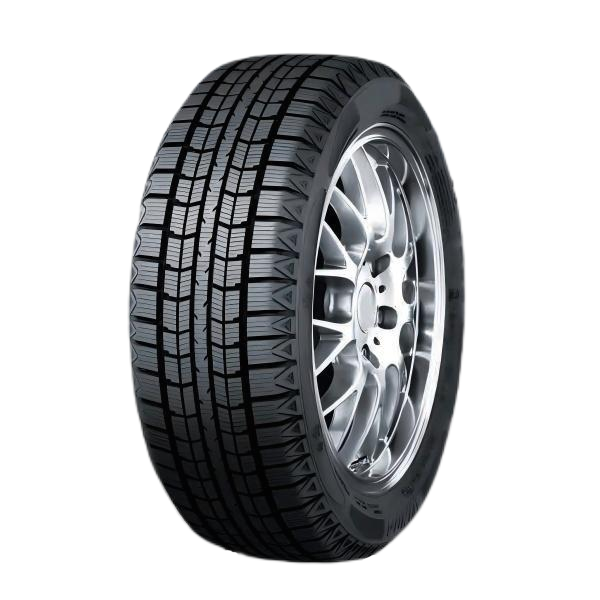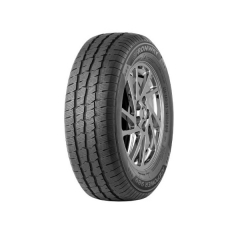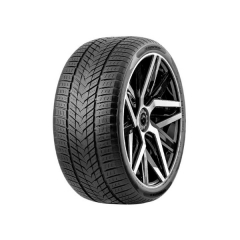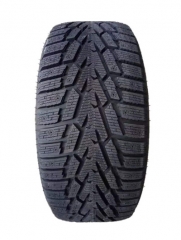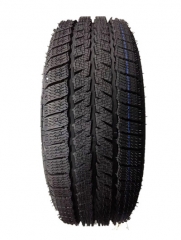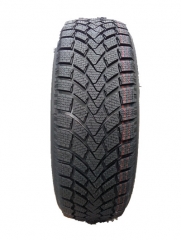WINTER TYRE
WINTER TYRE
Snow tires—also called winter tires—are tires designed for use on snow and ice. Snow tires have a tread design with larger gaps than those on summer tires, increasing traction on snow and ice. Such tires that have passed a specific winter traction performance test are entitled to display a "Three-Peak Mountain Snow Flake" symbol on their sidewalls. Tires designed for winter conditions are optimized to drive at temperatures below 7 °C (45 °F). Some snow tires have metal or ceramic studs that protrude from the tire to increase traction on hard-packed snow or ice. Studs abrade dry pavement, causing dust and creating wear in the wheel path. Regulations that require the use of snow tires or permit the use of studs vary by country in Asia and Europe, and by state or province in North America.
Related to snow tires are those with an M+S rating, which denotes an "all-season" capability—quieter on clear roads, but less capable on snow or ice than a winter tire.
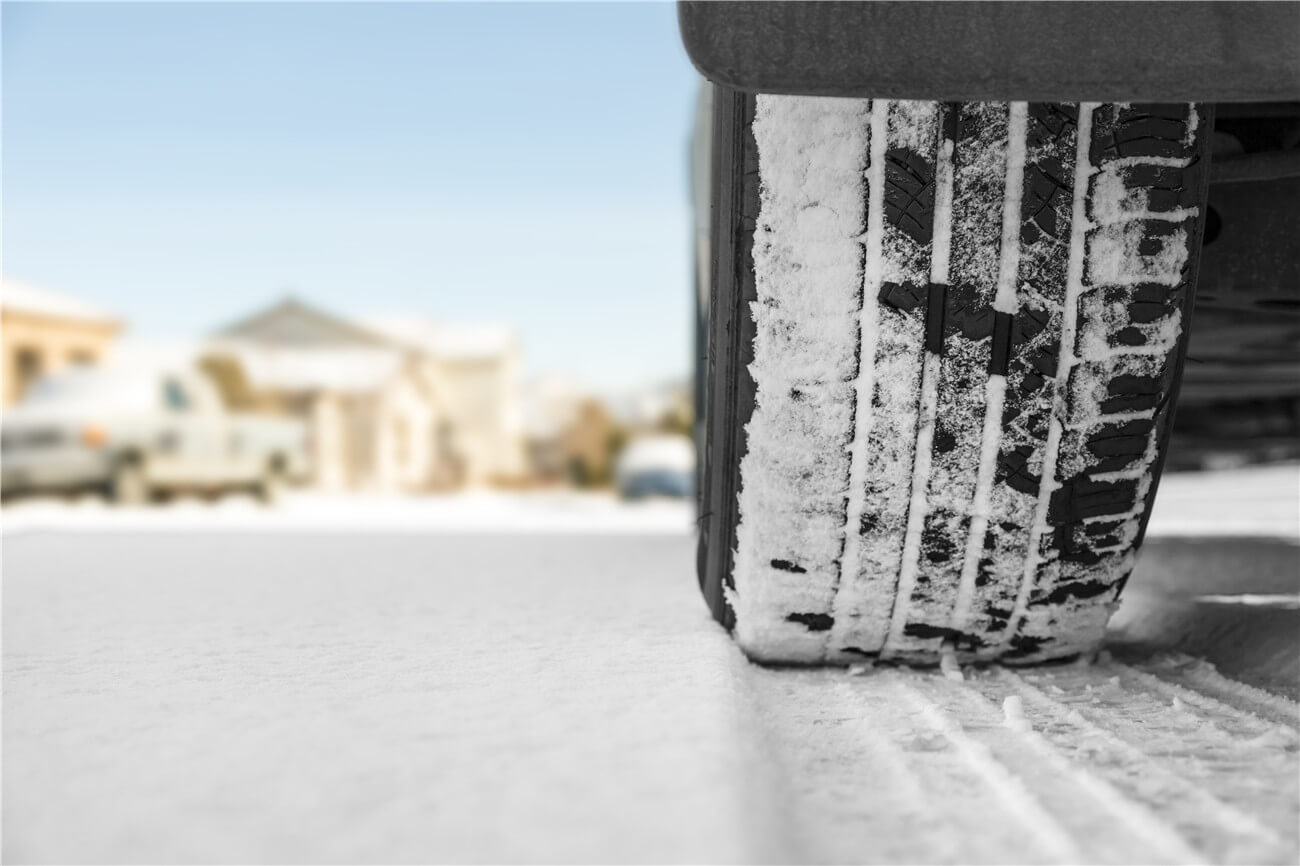
Tread:
Attributes that can distinguish snow tires from "all-season" and summer tires include:
Studs:
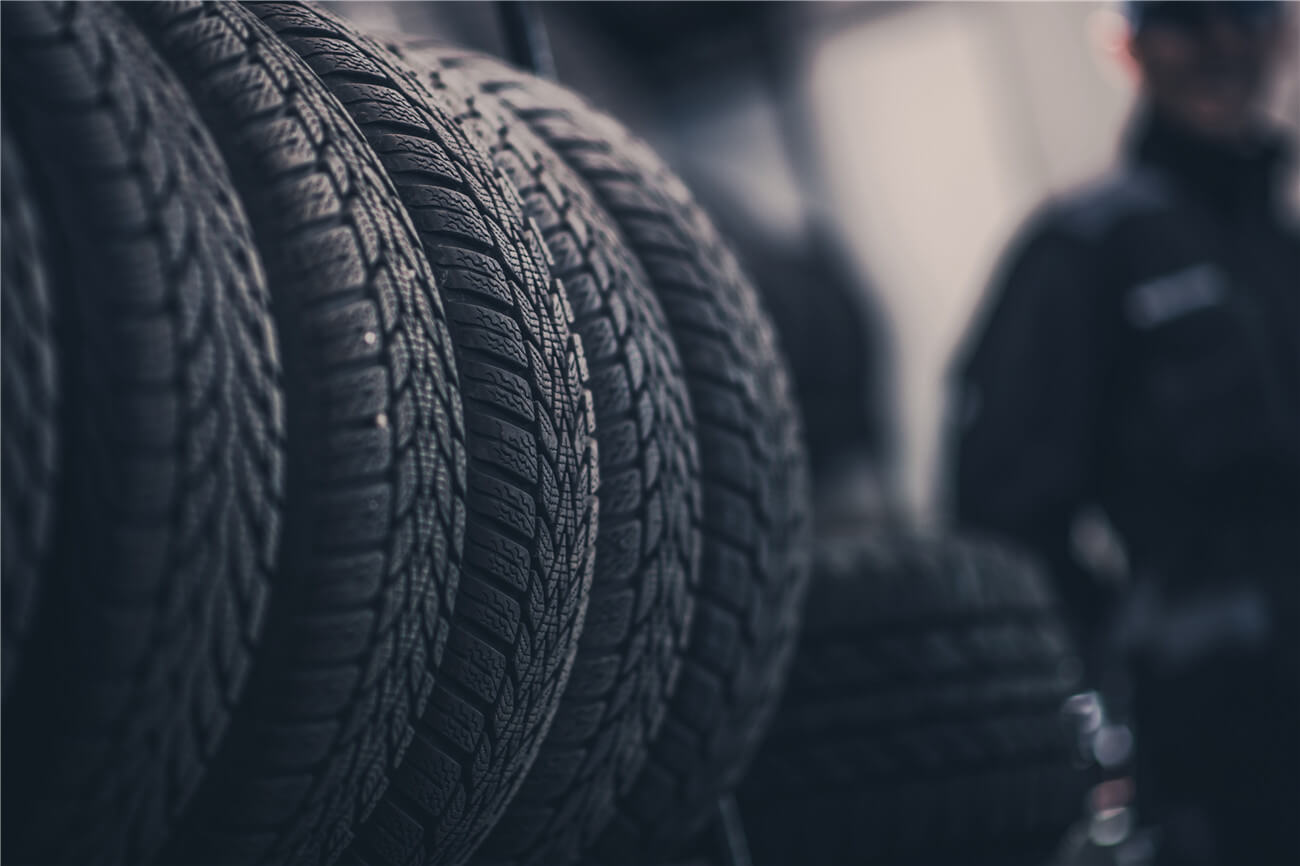
Many jurisdictions in Asia, Europe, and North America seasonally allow snow tires with metal or ceramic studs to improve grip on packed snow or ice. Such tires are prohibited in other jurisdictions or during warmer months because of the damage they may cause to road surfaces. The metal studs are fabricated by encapsulating a hard pin in a softer material base, sometimes called the jacket. The pin is often made of tungsten carbide, a very hard high performance ceramic. The softer base is the part that anchors the stud in the rubber of the tire. As the tire wears with use, the softer base wears so that its surface is at about the same level as the rubber, whereas the hard pin wears so that it continues to protrude from the tire. The pin should protrude at least 1 millimetre (0.04 in) for the tire to function properly. Snow tires do not eliminate skidding on ice and snow, but they greatly reduce risks.
Studdable tires are manufactured with molded holes on the rubber tire tread. Usually, there are 80 to 100 molded holes per tire for stud insertion. The insertion is done by using a special tool that spreads the rubber hole so that a stud jacket can be inserted and the flange at the bottom of the jacket can be fitted nicely to the bottom of the hole. The metal studs come in specific heights to match the depths of the holes molded into the tire tread based on the tread depths. For this reason, stud metals can only be inserted when the tires have not been driven on. A proper stud insertion results in the metal jacket that is flush with the surface of the tire tread having only the pin part that protrudes.
When studs come into contact with pavements they abrade the asphalt or concrete surface. This can result in creating polluting dust and wear in the wheel path that prevents proper drainage. For this reason, studded tires are banned, at least seasonally, in many jurisdictions.
How to Choose Proper Tires for Winter DrivingUnderstand the Ratings
today, which can make shopping for winter tires confusing.
M+S: The M+S symbol displayed on an all-season tire indicates it will perform well in moderate winter conditions. M+S means mud and snow.
All-season tires marked with M+S, or the three-peak mountain snowflake symbol and M+S, are designed with enough grip to handle modest amounts of snow and ice. All season-tires with these markings will perform better than those without markings, but no all-season tire performs as well as a true winter tire.
The tread design is also different from the lateral grooves identifiable on most all-season tires. Winter tires boast sharp, irregular tread blocks and larger grooves between lugs to help the tire cut through and displace snow, creating closer contact with the road.
True winter tires are siped, meaning they have numerous slits in the lugs that provide added grip. These anatomical differences make winter tires more aggressive than all-season models branded for mud and snow.
In general, there are three different categories of true winter tires: performance, studded and studdable.
snow and ice, improving traction. They have drawbacks: They’re noisy and have the potential to damage pavement.
For this reason, states have varying regulations on what time of year studs are allowed on public roadways, if at all. The U.S. Tire Manufacturers Association published a list of studded tire regulations as of November 2018 for passenger cars, but recommends double-checking with your state or local Department of Transportation.
While studded tires perform best in extreme conditions, extra tread depth is needed to accommodate studs, which limits studded tire size options.
Studless tires have more advanced winter tread compounds, which means they’ll outperform studded models in all but the slickest conditions. Studless tires handle best in slush and packed snow.
If you’re unsure whether you’ll need studs, consider investing in studdable tires, which feature performance tread but can accommodate the addition of studs if desired.
195/65R15 175/70R13 185/60R14 185/65R15 195/60R15 185/65R14 225/40R18 225/45R17 205/65R15 215/60R16 195/60R14 215/55R17 205/60R16 215/65R16 225/50R17 175/65R14 245/45R18 225/55R17 225/65R17 235/65R17 H205/65R16C 215/65R16C 215/70R16 235/65R16 225/45R18 235/45R17 225/60R17 215/55R16 225/55R16 275/60R20 275/65R18 175/70R14 215/70R15 285/60R18 235/70R16 205/55R16 215/45R17 215/60R17 185/70R14 235/60R18 195/55R15 265/65R17 195/55R16 215/50R17 225/60R16 265/70R17 185/60R15 245/40R18 225/65R16 195/70R15 185/75R16 235/55R18 195/75R16C 275/55R20 235/55R17 215/75R16C 165/70R13 225/70R15C 165/70R14 235/75R15 H205/70R15C 275/65R17 205/70R15C 205/65R16C
Related to snow tires are those with an M+S rating, which denotes an "all-season" capability—quieter on clear roads, but less capable on snow or ice than a winter tire.

Tread:
Attributes that can distinguish snow tires from "all-season" and summer tires include:
- An open, deep tread, whose void ratio between rubber and spaces between the solid rubber is comparatively high
- Shoulder blocks—specialized tread design at the outside of the tire tread to increase snow contact and friction
- A narrower aspect ratio between the diameter of the tire and the tread width to minimize resistance from the plowing effect of the tire through deeper snow
- Hydrophilic rubber compounds that improve friction on wet surfaces
- Additional siping, or thin slits in the rubber, that provide more biting edges and improve traction on wet or icy surfaces.
Studs:

Many jurisdictions in Asia, Europe, and North America seasonally allow snow tires with metal or ceramic studs to improve grip on packed snow or ice. Such tires are prohibited in other jurisdictions or during warmer months because of the damage they may cause to road surfaces. The metal studs are fabricated by encapsulating a hard pin in a softer material base, sometimes called the jacket. The pin is often made of tungsten carbide, a very hard high performance ceramic. The softer base is the part that anchors the stud in the rubber of the tire. As the tire wears with use, the softer base wears so that its surface is at about the same level as the rubber, whereas the hard pin wears so that it continues to protrude from the tire. The pin should protrude at least 1 millimetre (0.04 in) for the tire to function properly. Snow tires do not eliminate skidding on ice and snow, but they greatly reduce risks.
Studdable tires are manufactured with molded holes on the rubber tire tread. Usually, there are 80 to 100 molded holes per tire for stud insertion. The insertion is done by using a special tool that spreads the rubber hole so that a stud jacket can be inserted and the flange at the bottom of the jacket can be fitted nicely to the bottom of the hole. The metal studs come in specific heights to match the depths of the holes molded into the tire tread based on the tread depths. For this reason, stud metals can only be inserted when the tires have not been driven on. A proper stud insertion results in the metal jacket that is flush with the surface of the tire tread having only the pin part that protrudes.
When studs come into contact with pavements they abrade the asphalt or concrete surface. This can result in creating polluting dust and wear in the wheel path that prevents proper drainage. For this reason, studded tires are banned, at least seasonally, in many jurisdictions.
How to Choose Proper Tires for Winter Driving
Understand the Ratings
3PMSF: Tire makers apply the Alpine symbol – also known as the three-peak-mountain with snowflake (3PMSF) – to any tire that passes performance requirements on snow. This is known as the snow grip index, or SG. In the past, only dedicated winter tires bore this symbol, but some all-season tires carry the marking
today, which can make shopping for winter tires confusing.M+S: The M+S symbol displayed on an all-season tire indicates it will perform well in moderate winter conditions. M+S means mud and snow.
All-season tires marked with M+S, or the three-peak mountain snowflake symbol and M+S, are designed with enough grip to handle modest amounts of snow and ice. All season-tires with these markings will perform better than those without markings, but no all-season tire performs as well as a true winter tire.
The Anatomy of a Winter Tire
Performance winter tires are built differently than all-season tires. They’re made from a flexible, hydrophilic rubber compound that provides more traction on snow and ice.The tread design is also different from the lateral grooves identifiable on most all-season tires. Winter tires boast sharp, irregular tread blocks and larger grooves between lugs to help the tire cut through and displace snow, creating closer contact with the road.
True winter tires are siped, meaning they have numerous slits in the lugs that provide added grip. These anatomical differences make winter tires more aggressive than all-season models branded for mud and snow.
In general, there are three different categories of true winter tires: performance, studded and studdable.
Studs
Studs are lightweight metal pins embedded into the tread of winter tires. Like snow chains, they dig into compactsnow and ice, improving traction. They have drawbacks: They’re noisy and have the potential to damage pavement.
For this reason, states have varying regulations on what time of year studs are allowed on public roadways, if at all. The U.S. Tire Manufacturers Association published a list of studded tire regulations as of November 2018 for passenger cars, but recommends double-checking with your state or local Department of Transportation.
While studded tires perform best in extreme conditions, extra tread depth is needed to accommodate studs, which limits studded tire size options.
Studless tires have more advanced winter tread compounds, which means they’ll outperform studded models in all but the slickest conditions. Studless tires handle best in slush and packed snow.
If you’re unsure whether you’ll need studs, consider investing in studdable tires, which feature performance tread but can accommodate the addition of studs if desired.
Extra Tips for Purchasing Winter Tires
When purchasing winter tires, keep these five tips in mind to ensure your vehicle handles safely in winter conditions:- Pay attention to sizing when buying a new set of tires. Generally, it’s best to use the same tire size as the OEM.
- Cold temperatures drop your tire pressure. On average, a tire loses 1 PSI for every 10-degree Fahrenheit temperature drop. Check your tire pressure regularly to maintain optimum performance. The recommended tire pressure is the same for winter tires as for other tires.
- Always buy four matching tires. It’s tempting to save cash and only buy two, but this creates uneven traction, which could be hazardous. Uneven tire tread can also damage the transmissions on some vehicles, so buying four tires up front is the most economical, long-term choice.
- Check your tires for wear at least once a month. After roughly five years of use, you should have them inspected annually. Replace tires when the wear bar indicator is visible.
- Properly storing your winter tires extends their lifespan. Clean each tire thoroughly before putting them in storage and keep the tires cool, dry and out of direct sunlight.
Recommend Patterns:
195/65R15 175/70R13 185/60R14 185/65R15 195/60R15 185/65R14 225/40R18 225/45R17 205/65R15 215/60R16 195/60R14 215/55R17 205/60R16 215/65R16 225/50R17 175/65R14 245/45R18 225/55R17 225/65R17 235/65R17 H205/65R16C 215/65R16C 215/70R16 235/65R16 225/45R18 235/45R17 225/60R17 215/55R16 225/55R16 275/60R20 275/65R18 175/70R14 215/70R15 285/60R18 235/70R16 205/55R16 215/45R17 215/60R17 185/70R14 235/60R18 195/55R15 265/65R17 195/55R16 215/50R17 225/60R16 265/70R17 185/60R15 245/40R18 225/65R16 195/70R15 185/75R16 235/55R18 195/75R16C 275/55R20 235/55R17 215/75R16C 165/70R13 225/70R15C 165/70R14 235/75R15 H205/70R15C 275/65R17 205/70R15C 205/65R16C


